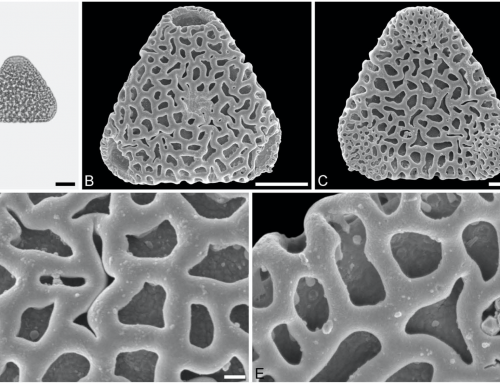Authors: Torsten Wappler, Conrad C. Labandeira, Michael S. Engel, Reinhard Zetter, Friðgeir Grímsson
Iconic examples of insect pollination have emphasized narrowly specialized pollinator mutualisms such as figs and fig wasps and yuccas and yucca moths. However, recent attention by pollination ecologists has focused on the broad spectra of pollinated plants by generalist pollinators such as bees. Bees have great impact for formulating hypotheses regarding specialization versus generalization in pollination mutualisms. We report the pollination biology of six northern European species of an extinct tribe of pollen-basket-bearing apine bees, Electrapini, of early–middle Eocene age, examined from two deposits of 48 and 44 million years in age. These bees exhibit a pattern of generalized, incidental pollen occurring randomly on their heads, thoraces, and abdomens, obtained from diverse, nectar-bearing plants. By contrast, a more restricted suite of pollen was acquired for metatibial pollen baskets (corbiculae) of the same bee taxa from a taxonomically much narrower suite of arborescent, evergreen hosts with uniform flower structure. The stereotyped plant sources of the specialist strategy of pollen collection consisted of pentamerous, radially symmetrical flowers with a conspicuous gynoecium surrounded by prominent nectar reward, organized in structurally similar compound inflorescences. Pollen specialization in bees occurs not for efficient pollination but rather in the corbiculate Electrapini as food for bee larvae (brood) and involves packing corbiculae with moistened pollen that rapidly loses viability with age. This specialist strategy was a well-developed preference by the early Eocene, providing a geochronologic midpoint assessment of bee pollen-collection strategies.




